Loading
Archives of Cancer Biology and Therapy
ISSN: 2692-8302
Editors Choice Articles
Uniportal VATS Lobectomy for Lung Cancer: Feasibility and Cost Effectiveness in a Single Center Experience
Crucitti Pierfilippo, Longo Filippo, Tacchi Giovanni, Manca Paolo, Frasca Luca, Carannante Filippo, Spoto Silvia, Citarella Fabrizio, Tonini Giuseppe
In last decades, video-assisted thoracic surgery (VATS) together with robotic-assisted thoracic surgery (RATS) can be considered the biggest innovation in thoracic surgery. This approach drastically changed the way of performing surgical operations, improving patient’s outcome undergoing thoracic surgery.
Arch Cancer Biol Ther, 2020, Volume 1, Issue 1, p1-10 | DOI: 10.33696/cancerbiology.1.001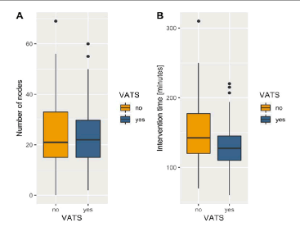
Angioimmunoblastic T cell Lymphoma Microenvironment
Sergiu Pasca, Ancuta Jurj, Daniela Matei
Angioimmunoblastic T cell lymphoma (AITL) is one of the most common T-cell lymphomas, second only to peripheral T-cell lymphoma not otherwise specified (PTCL-NOS). Initially AITL was considered a non-malignant lymphadenopathy with immune hyperactivation, nowadays being classified as a PTCL.
Arch Cancer Biol Ther, 2020, Volume 1, Issue 1, p11-13 | DOI: 10.33696/cancerbiology.1.002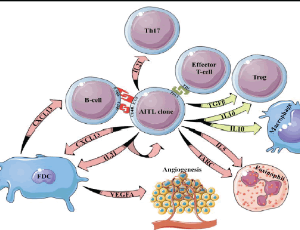
Lessons Learnt from COVID-19: How Can We Prepare for Another Pandemic?
Matthew I. Ehrlich, Muhammad Wasif Saif
Five months into the COVID-19 pandemic, the U.S. death toll from the virus has now surpassed 100,000 people. Many more cases remain nationwide, while an unknown number of patients currently harbor the virus asymptomatically. While health officials are now optimistic regarding the decline in prevalence and number of deaths due to COVID-19 and the possibility of a vaccine by the fall, we cannot lose sight of the bigger picture: the next pandemic.
Arch Cancer Biol Ther, 2020, Volume 1, Issue 1, p22-24 | DOI: 10.33696/cancerbiology.1.005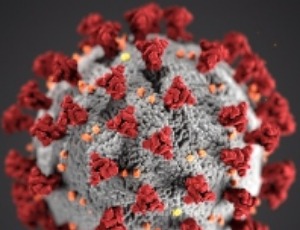
Reduced BCR Signaling and a Metabolic Shift Accompanies Malignant Progression of Follicular Lymphoma: A Lesson from Transcriptomics
Cesare Sala, Annarosa Arcangeli
In the manuscript entitled “The ion channels and transporters gene expression profile indicates a shift in excitability and metabolisms during malignant progression of Follicular Lymphoma”, we reported recent advances in our understanding of how the gene expression profile of ion channels and transporters (ICT-GEP) contributes to identify specific signatures associated with Follicular Lymphoma (FL), with those FL that acquire chemoresistance after a relapsing-remitting course, and with the more aggressive Diffuse Large Cell Lymphoma (DLBCL), which in some cases represent the evolution of FLs.
Arch Cancer Biol Ther, 2020, Volume 1, Issue 2, p31-36 | DOI: 10.33696/cancerbiology.1.007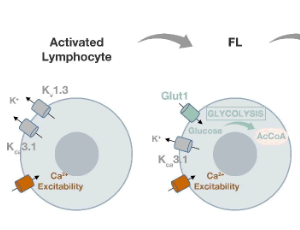
Synthetic Lethal Drug Combinations Targeting Proteasome and Histone Deacetylase Inhibitors in TP53-Mutated Cancers
Shaoli Das, Xiang Deng, Kevin Camphause, Uma Shankavaram
Background: We have recently published SL-BioDP, a web resource for querying, exploration and visualization of potential synthetic lethal targets and possible synergistic drug combinations for 18 cancer types. Methods: From our predictive synthetic lethality model used in SL-BioDP, we inferred TP53 mutation lead to potential synergistic drug combination of Bortezomib and Vorinostat. Here we show, how to extrapolate the drug combination results by combining drug screening data from cancer cell lines and showed the potential synergy of the drug targets, proteasome, and histone deacetylase (HDAC) pathways respectively, for patient survival advantage.
Arch Cancer Biol Ther, 2020, Volume 1, Issue 2, p42-47 | DOI: 10.33696/cancerbiology.1.009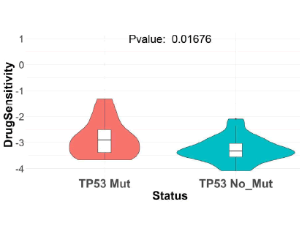
Role of the Gut Microbiome in the Modulation of Cancer Immunotherapy Response
Sachin Kumar Deshmukh
The gut microbiome or gut flora is a vast community of microorganisms such as bacteria, viruses, protozoa, and fungi that inhabit the digestive tract of the human and other animals. In the human body, bacterial species colonize into the oral cavity, skin, vagina, and placenta, however, the largest population of microorganisms resides in the intestine. The majority of gut microbiota belong to the phyla Firmicutes, Bacteroidetes, Proteobacteria and Actinobacteria.
Arch Cancer Biol Ther, 2020, Volume 1, Issue 3, p52-54 | DOI: 10.33696/cancerbiology.1.011
Influence of Clinical Risk Factors on Outcomes in Men with Stage I Non-Seminomatous Germ Cell Tumor Undergoing Robot-Assisted Retroperitoneal Lymph Node Dissection
Dora Jericevic, Jacob Taylor, William C. Huang
We recently published our multi-institutional experience performing primary robot-assisted retroperitoneal lymph node dissection (RA-RPLND) for men with non-seminomatous germ cell tumor (NSGCT). We concluded that primary RA-RPLND for NSGCT can be performed safely with low complication rates, acceptable early oncologic outcomes, and lower overall theoretical chemotherapy burden. In this commentary, we explore outcomes in clinical stage I patients stratified by clinical risk factors (RF) and estimate reductions in chemotherapy burden.
Arch Cancer Biol Ther, 2020, Volume 1, Issue 3, p64-67 | DOI: 10.33696/cancerbiology.1.014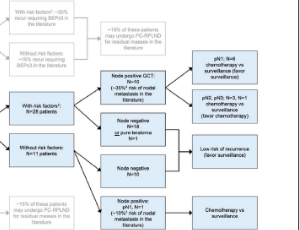
About Scientific Archives
Scientific Archives is a global publisher initiated with the mission of ensuring equal opportunity for accessing science to research community all over the world. Spreading research findings with great relevance to all channels without any barrier is our goal. We want to overcome the challenges of Open Access with ensured quality and transparency.
